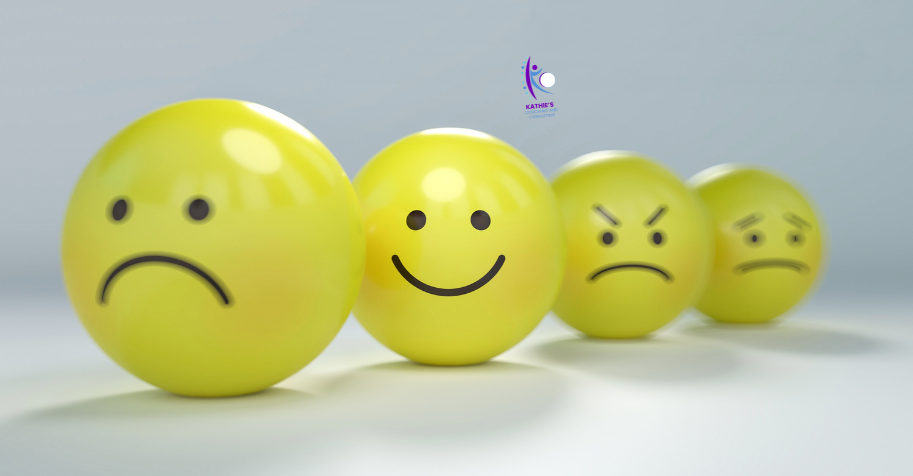Your Chiropractor Might Be Your Best Burnout Therapist
Unwind your burnout
Burnout takes a toll on more than just our energy—it affects our bodies, minds, and overall well-being. In today’s 12 Days of Holiday Burnout Breakthrough episode, we had the privilege of speaking with Dr. Nancy Gomez, a chiropractic physician with over 25 years of experience in massage therapy and chiropractic care.
Dr. Nancy shared profound insights into how chiropractic treatment can alleviate burnout by addressing its physical, neurological, and hormonal roots.
Let’s break down her expertise and learn how improving mobility and reducing stress can revolutionize how we manage burnout.
Watch the video on Kathie’s YouTube Channel
Listen to the episode on Kathie’s Coaching Podcast
How mobility impacts stress
How Mobility Impacts Stress and Burnout
Stress isn’t just in our minds—it’s in our bodies, too. Prolonged sitting, poor posture, and repetitive movements can lead to restricted mobility, stiff joints, and chronic pain, which amplify the stress we feel. Dr. Nancy explained how chiropractic care can help:
Restoring Joint Mobility: Chiropractic adjustments release restrictions in joints, allowing muscles and tendons to function properly. This reduces pain and improves range of motion.
Relieving Physical Stressors: By easing the tension caused by poor posture and prolonged sitting, chiropractic care decreases the physical burden on our nervous system, reducing stress signals to the brain.
Boosting Oxygenation and Muscle Tone: Improved movement enhances oxygen flow, muscle efficiency, and overall physical well-being.
When your body moves with ease, your mind feels freer too, creating a ripple effect that combats stress and burnout.
Adrenal glands, cortisol, burnout
The Adrenal Glands, Cortisol, and Burnout
Dr. Nancy provided a fascinating explanation of how chronic stress affects our adrenal glands, the producers of adrenaline and cortisol:
The Stress Response Cycle
Adrenaline: Provides quick energy to handle immediate threats.
Cortisol: Steps in during prolonged stress to sustain energy but at a cost—it suppresses non-essential functions like digestion and immunity.
2. The Problem with Chronic Stress
When stress becomes a constant, cortisol levels stay elevated, leading to:
Digestive issues, like GERD or ulcers.
Weakened immune systems.
Exhaustion and adrenal fatigue (a.k.a. burnout).3. Chirproactic Care to the Rescue
3. Chiropractic Care to the Rescue
Chiropractic adjustments help your body shift from the fight-or-flight mode (sympathetic nervous system) to rest-and-repair mode (parasympathetic nervous system). This promotes:
Improved sleep.
Balanced cortisol levels.
Enhanced mood through increased serotonin, dopamine, and endorphins.
Dopamine - a game changer
Dopamine and Neuroplasticity: A Game Changer
Dopamine, the "feel-good" neurotransmitter, plays a critical role in focus, motivation, and emotional regulation. Stress and burnout can deplete dopamine levels, leaving us feeling unmotivated and exhausted. Dr. Nancy explained how chiropractic care boosts dopamine naturally:
Neuromodulation: Adjustments stimulate mechanoreceptors in muscles and joints, sending signals to the spinal cord and brain to release dopamine and serotonin.
Quick and Lasting Results: Patients often feel an immediate mood lift after adjustments, but consistency in care creates lasting changes in the brain’s neural pathways, thanks to neuroplasticity.
Burnout recovery with chiropractic care
Burnout Recovery with Chiropractic Care
Dr. Nancy’s integrative approach combines chiropractic adjustments, massage therapy, and dry needling to deliver comprehensive care. Here’s how her methods help prevent and recover from burnout:
Pain Reduction: Eliminates physical discomfort that drains mental energy.
Stress Reduction: Shifts the nervous system into a restorative state.
Neurotransmitter Boost: Enhances mood and focus naturally.
Analogy - body and bank account
Your Body, Your Bank Account
Dr. Nancy likened our adrenal glands to a bank account. Chronic stress is like overspending—eventually, you’ll go bankrupt. But by incorporating restorative practices, like chiropractic care, you can "deposit" back into your wellness account, ensuring long-term resilience.
Key takeaways
Key Takeaways
Burnout isn’t just mental—it’s physical, too. By addressing mobility, stress responses, and neurotransmitter health, chiropractic care offers a holistic solution to burnout. Incorporating treatments like those Dr. Nancy offers can lead to healthier employees and a more positive workplace culture.
Connect with Dr. Nancy
Dr. Nancy Gomez serves the South Florida area, offering corporate wellness programs and individual treatments that combine chiropractic care, massage, and dry needling. Her services focus on reducing stress and improving mobility, making her an invaluable asset for companies and individuals alike.
You can connect with Dr. Nancy through her website or book a session if you’re in South Florida. For more details:
Visit Dr. Nancy’s website: https://tulachiro.com/
Ready to beat burnout? Share this post with someone who needs it, and stay tuned for the next episode in the 12 Days of Holiday Burnout Breakthrough. Together, we’ll create healthier, happier lives—one adjustment at a time.
About the Author:
Kathie Owen is a seasoned corporate wellness consultant, life coach, and former fitness and wellness director with over two decades of experience in creating healthier, happier workplaces. With a psychology degree from the University of Houston and a passion for motivation, Kathie has dedicated her career to ending toxic workplace cultures through holistic wellness programs that truly make a difference.
Kathie Owen, Corporate Wellness Consultant since 2012 (Our Story)
Having worked in both corporate and fitness environments, Kathie blends her expertise in employee engagement, leadership development, physical health, and mental well-being to design programs that prevent burnout and inspire thriving teams.
She’s been a certified fitness trainer since 2002 and has personally coached hundreds of individuals to reach their wellness goals. Now, she’s on a mission to share her strategies with companies that value their people.
Through her 12 Days of Burnout Breakthrough series, Kathie combines personal stories, expert insights, and practical tips to help you recognize, prevent, and heal from burnout. Her goal? To show you how a little bit of wellness can transform not only your workplace but also your life.
When she’s not leading workshops, coaching aspiring wellness professionals, or writing her next blog post, you’ll find Kathie walking her dog Rusty, diving into her favorite self-development books, or dreaming up her next big idea to inspire and uplift others.
Follow Kathie on Social Media
Read More Corporate Wellness Articles Here
Transcript
Kathie: 0:00
So welcome to the 12 days of holiday burnout during the month of December. And today's guest is actually a chiropractor who does corporate wellness as well. She is my friend and colleague and one of the experts on our panel of experts. during this holiday burnout breakthrough. And her name is Dr. Nancy Gomez and let me have her tell you a little bit about herself.
Dr. Nancy: 0:35
Hi everybody. Thank you so much for inviting me to be part of your panel. My name is Dr. Nancy Gomez. I am a chiropractic physician. I started off my career as a massage therapist and just fell in love with doing body work and so I went to chiropractic school. Um, and I've been practicing now combined 25 years with massage and chiropractic. So I do corporate wellness programs where I combine massage, dry needling, and chiropractic on site in the trenches inside of companies. And so I find that it really helps with the present stress reduction. It improves people's, stress levels, it improves the company culture. It really helps people get more focused at work because they're not having to deal with like the aches and pains of sitting or even the standing desks all day long. Additionally, I go to people's houses and I treat them and their families as well. So it's been very rewarding being able to combine all of my different tools into one kit and to provide it to the community and to the workforce. Awesome. I love that.
Kathie: 1:44
And honestly, I've seen in corporate cultures, how massage and just stress reduction through, because we hold all of our stress in our upper back. And I have seen those days that the, the massage therapist comes in the days that the chiropractor comes in. It is just a great day and everybody's looking forward to it. Dr. Gomez has some really cool insights on burnout, including neurotransmitters. And I cannot wait to get into the meat of this. So on the first question that I'm going to ask her today is, How does improving mobility and reducing pain impact stress and burnout?
Dr. Nancy: 2:28
Yeah, so I think that when we are feeling uncomfortable in our body and our bodies aren't able to move, ideally, if we're not able to live our life to our fullest, the way that we want to move, there are restrictions. I think that that really causes emotional distress. stress, even sometimes depression. I mean, we feel small in our bodies when we can't move it every day the way that we want to the capacity. Like some people who, for example, work in the workforce and sit for eight to 10 hours a day in front of the computer. The prolonged sitting really shuts down their gluteal muscles. So it's not really getting any information. It shortens the hamstrings. It really compresses the spine and decreases the natural curves in our spine, which make it feel really rigid and stiff. Um, we're craning our necks to see the computer and we're looking at it for eight hours so that causes a lot of neck pain and headaches and TMJ in our shoulders or into our ears if that sounds familiar with stress. So all of that impacts. over time, our capacity for motion, because we're meant to be moving all day long, kinetically in different directions. And we're usually just very, you know, back and forth, straight and forward. So I found that that increases and compounds the stress that people feel on every day in the work environment. So how chiropractic care can help is that We really are the go to people for handling joint restrictions and range of motion, limited range of motion. So we get in there, we feel what's going on, we feel the planes of motion that are being restricted because of the lack of motion or wrong motion or poor holding patterns, and we're able to correct those and increase the range of motion and mobility in those joints which affect the tendons which affect the muscles and really decrease that tone so that we're able to move them the way that we want. We're able to go from a sitting to a standing motion sometimes without pain. We're able to sit in front of the computer for maybe 30 more minutes before we have neck pain. So all of that we consider those physical stressors and so chiropractic really helps to reduce those physical restrictions and stressors, which affects positively the stress response.
Kathie: 5:03
As you're saying that, I'm sitting there going, Oh yes, I know that feeling. I know that tension in the back. And I'm sure we all experienced this at some point in time. So this is very valuable information. I'd like to talk about what role the adrenal glands and cortisol play in burnout and how chiropractic care can help.
Dr. Nancy: 5:29
So yeah, the neurological component and the hormonal component of chiropractic care is really interesting and pivotal. So to understand that, we have to kind of go back and understand what the stress response is and how it occurs. So we have two different divisions. So, um, we have three types of our nervous system that deals with stress called the autonomic nervous division. We have the sympathetic response, which is our fight, flight, or freeze response when we incur a threat. and then we have our parasympathetic response, which is the rest and repair state. And so that comes in and it typically cleans up a stress response and it's, it should be our natural states is the parasympathetic or somewhere around that avenue. So when we encounter a stressful event, a threat, it could be physical stress. It could be emotional stress. It could be perceived stress like worry. Our brain, even good stress. Our brain doesn't know how to qualify that. It doesn't know where to put it. It just perceives it as stress. And so it goes into the brain. It alerts a little center in our brain called the amygdala, which we call the fear center. The amygdala then sends some messages over to another center in the brain called the hypothalamus, which is our command center. So the hypothalamus commands through the sympathetic nervous system to go to the adrenal glands, which are down on top of our kidneys. And so the adrenals, create and they disperse adrenaline. So we all know that adrenaline is like a superpower chemical that gives us the energy and the ability to deal with a threat on hand. I mean, it brings a lot of blood to our big muscles so that we could run or we could fight. It dilates our pupils so that we could see our environment and see the dangers at hand. But that system is really only meant to be handling immediate stress. Stress. Right? It's really powerful. So we can't be dealing with adrenaline for a long period of time because we don't have enough energy to sustain that. So When we have multiple encounters of stress, like we do in everyday life now, right? With chronic stress, we have multiple encounters of stress, multiple kinds of stress layering on top of each other. We need a new system to come in and help us with that prolonged stress. And so then that is where cortisol comes in, where the adrenal glands also make cortisol. So cortisol is a glucocorticoid, which means that it releases more blood, more sugar into our blood. And so that we have the energy to sustain this. This event, the stressful event. So that's great. We have that resource to get us through it and to give us the energy to go through it. But at the same time, cortisol has some inhibitory kind of effects on our body. It's seeing which parts of our body are essential for stress and which ones are non essential. It's perceiving that The digestive system isn't really essential. You don't really have to digest your food when you're in the middle of, you know, battling a tiger, right? So that's kind of shut down. Your immune system is kind of put to the side as well, so that all of your energy is geared towards handling the stressful events. So over time, you could imagine that our bodies start to get depleted from this. We're in a chronic stress state, and some of us have been in it for years. Then we're really depleting our bodies because of the effects of cortisol. You know, our digestive system might not be so hearty. We might start to get GERD or indigestion or even ulcers. Our immune system, we might start to get sick a little bit more, develop even more medical conditions. So I like to see the adrenal glands as like a bank account and our cortisol is money. So most of us don't have an indefinite amount of money in the bank, right? So we have to be really mindful and wise of how we make our spends. So we have to be the same way with our cortisol. We can't just keep spending cortisol because eventually we'll become bankrupt and we'll go into something that we call adrenal fatigue, which is what you consider burnout. as well. So adrenal fatigue can look like anxiety. It could look like chronic fatigue. It can look like depression. It could also cause a lot of other medical conditions as well. If you're really depleted, everybody really responds to it a little bit differently because they have different bodies. So we want to think about feeding our adrenals like we would feed our bank account and put deposits into it. So there are a lot of different ways we could put good deposits, positive deposits, to get ourselves out of the red. So that can look like Going to see a therapist to learn stress reduction techniques. being mindful of our nutrition, and having all of the different vitamins and minerals and nutritional support protein in our system, like vitamin C is a really important vitamin. It's a good tonic for the adrenal glands. it needs it to make all of these different stress chemicals, but chiropractic care can help as well. That's another good deposit we could put into our system. As I said before, it increases our mobility. So when we can move better, we're increasing our muscle tone. We're increasing our oxygenation. We're decreasing pain levels. And so when we decrease pain levels, we're decreasing physical stress sensors going to our brain. We're getting ourselves more into a parasympathetic response with that. We're improving our sleep, we're improving our mood because we're increasing serotonin levels, we're increasing endorphins, we're increasing dopamine. So there are a list and list and list of different positive effects we have with chiropractic care on stress. Just the main one is by decreasing pain and making people feel good.
Kathie: 11:20
Wow, that was incredible. I love the way you explain that because I think that we all can relate and understand and it was so simple and easy. And so I want to note right here on each episode, I include a blog post, the link will be in the show notes and description below, that will include more resources that go along with this. Thanks. And more details so you can take notes and understand because this was very powerful. It honestly made me feel like running to, to go see Dr. Nancy, like right away, get my, my spine adjusted, get my massage in because this is all about burnout. And she explained exactly how burnout happens and that adrenal overload. And so many of us. So many of us do not realize that we're putting our adrenal glands in overdrive. That's a bank account that is going to be depleted if you don't take care of it. So I can't stress enough that you may want to watch this episode again, listen to it again, just to get those insights because they were very, very powerful. Another thing when we were talking about doing this episode is she talked about dopamine levels and I talk about dopamine a lot on this channel just because dopamine is our attention hormone and it's so you you hear nowadays of Dopamine addiction because when we're stressed out, you think about it. What do you do? You grab your phone and you scroll. What's happening is you're getting a dopamine release that The first time you did it, it went high. The next time you did it, it dropped. And it's hard to get it back to that high, but our brain is addicted to finding that high dopamine that you got when you first started scrolling a long time ago. Sometimes that doesn't come back for a while. So when Dr. Nancy and I talked on our first visit, She, mentioned how chiropractic care can really help with dopamine levels. This is, intrigued me to no end and I cannot wait to hear her answer.
Dr. Nancy: 13:51
So I spent the past 10 years as a chiropractor and I was also the VP of a wellness company that went into substance abuse treatment centers and treated people with mental health conditions and also addiction. And it was very rewarding to work with her. time of my career. But this was our main purpose when we were treating these clients is to really help to boost their dopamine levels, help to make a positive impact on their depleted neurotransmitters. Addiction and different types of substances can really deplete dopamine levels because you have such big bursts from it, right? So, they start to get depleted a lot like the adrenals with the cortisol and the bank account association I had made before. This was the pathway that we were really focused on when we were treating this population. It all starts off with neuromodulation. It's a term that we use. It's very effective in making a positive impact on the nervous system and ultimately the brain with neuroplasticity. modulation. We could see it as anything that improves the communication of the nervous system. So we do this with the chiropractic adjustment is the biggest blast to it, through the mechanoreceptors. So the mechanoreceptors are nerve endings, special nerve endings that are in the muscles, the tendons, the joints, and even on the skin. And so these mechanoreceptors can detect pain, position temperature, vibration, they have all different kinds of nerve endings for that. But there are a ton of them that are in the joints and the joint capsules. So when we go in there and we make an adjustment, we're really blasting these. We get all of this information through the joints and it goes directly to the spinal cord. And what A lot of us don't know is that the spinal cord is really equipped to do a lot of things really fast before the messages get sent to our brain. So we could actually create a dopamine in our spinal cord. We could create serotonin and endorphins in our spinal cord. So we get really quick response. So I don't know if you've ever been adjusted and then automatically you feel like that you feel the endorphins. Yeah, so that's like the quick response there. So that gets flooded in our body, the message goes through our spinal cord simultaneously up to our brain, goes to different centers in our brain, like senses the dopamine circulating already, goes through the reward system, and then ding! We have more dopamine blasts there. It goes to the, to the frontal cortex. It detects the serotonin, then ding, we have more serotonin. We have elevated mood there. It goes to the sensory cortex and detects changes in our position in our body, detects decreased pain signals. And then boom, our body doesn't have to send as much information down that this area is in pain. So this all happens with a singular adjustment, but the beauty is over time when we're going through a chiropractic treatment plan, a lot of the times we have frequent visits, and it's because it's the multiplying effect of making these changes, just kind of like potty training, you know, you have to reinforce, reinforce, reinforce to make the change. To change the behavior, it's the same thing with getting adjustments or getting any kind of therapy, physical therapy. If you really want to make that change and have neuroplasticity occur, have the change in the neuronal pathways in our brain occur, then we really do have to go through the repetition and we have to keep pushing and nudging. That join into space, we have to keep blasting it. Massage, dry needling, physical therapy works along the same kind of pathway, but with the adjustment, we're able to really get those mechanoreceptors and fire them up to get the biggest blast to our nervous system. Does that make sense? Wow.
Kathie: 17:45
Wow. That was so good because here's the, here's what I want to hone in on. I had a chiropractic treatments. many years ago. And what I felt was I felt like I could breathe better as soon as I was done. But Dr. Nancy just, she explained it perfectly to a T. And I can't stress it enough how having this benefit inside your company is overwhelmingly tremendous because it's, it's going to help people. I have worked in companies that had the massage. That's just a teeny tiny bit of it. Imagine having your spine adjusted. And I always have chiropractors come in to my health fairs because of these benefits that she's talking about right here. But the, the benefits, wow, I am so, my mind is blown because I did not realize these intricacies that we just heard today. So, In closing, I would love for Nancy to explain how to get in touch with her, how to work with her, and again, the links will be in the blog post that is in the show notes and description below. The blog post will also include the transcript, the written notes that are so powerful to understand, and bonus resources, as well as where you can find Dr. Nancy. So please, Dr. Nancy, tell it.
Dr. Nancy: 19:20
So I practice in the South Florida area and, Southern Palm Beach, Broward County, Miami Dade County. So I can go to any companies within that region, anybody's house or office that wants to receive treatment. my typical sessions combine massage, chiropractic and dry needling. If somebody wants to go down that avenue and they're between 45 minutes to an hour and 15 minutes, depending on the needs. So I could link up my website and information, to this blog here so that you can contact me.
Kathie: 19:56
All right. Well, thank you so, so much for your time. This has been very beneficial and very helpful. And just like with all of my guests on here, these are experts that I work with as a corporate wellness professional. And. Hopefully we can do stuff online with them as well. And I want you to, reach out and understand these benefits of dealing with burnout. And I'm going to have Dr. Nancy back on the podcast, back on the YouTube channel to discuss more of this because I am absolutely positive we only tip. tip of the iceberg that we hit today. And I look forward to having her back. And I trust that you found today's episode helpful. And if you know somebody who can benefit from this, please share it with them. And until next time, I will see you next time. Peace out and Namaste. Thank you.

















Explore how Ted Lasso teaches us about authentic leadership through vulnerability, forgiveness, and embracing imperfection. This reflective piece shows why letting go of control creates deeper connections and how broken mirrors still reflect light. #TedLassoWisdom #AuthenticLeadership #EmbraceImperfection #HeartCenteredCoaching #CorporateWellness #MindfulLeadership